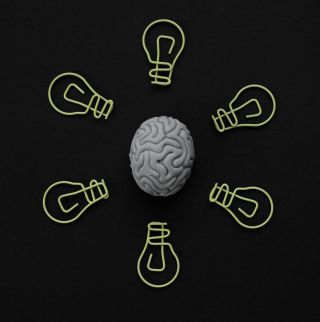Previous entries of this blog have explored various aspects of understanding and coping with relationship obsessive-compulsive disorder (ROCD). A particularly challenging issue for clients with ROCD is distinguishing between the automatic and controlled (also called passive and active) aspects of their thinking.
People with ROCD are highly preoccupied with doubts and questions regarding their relationships and partners. Such doubts revolve around themes such as the rightness of the relationship, the rightness of one’s relationship-related thoughts and feelings, or whether one’s partner is attractive, smart, or funny enough. In response to those questions, individuals with ROCD often find themselves spending hours every day deliberating the suitability of their relationship, monitoring their feelings, and comparing their partner to other potential partners.1
When clients begin therapy, they often feel overwhelmed by their streams of thoughts, believing they have no control over them. For example, a thought like “Am I in the right relationship?” might suddenly arise, and, within seconds, the person finds themselves caught up in extensive deliberations, emotional monitoring, or comparisons. This is where the distinction between automatic and controlled thinking becomes particularly important.
Imagine you’re listening to an important lecture, and suddenly a thought about your upcoming rent payment pops into your mind. This is an example of a passive, automatic thought. You didn’t consciously choose to think about rent at that moment—yet it happened. At this point, you might get carried away by this thought and start thinking about how to manage your budget, losing focus on the lecture. Alternatively, you can choose to let go of this automatic thought and actively refocus on the lecture. This is an example of active, controlled thinking.
Two Key Processes in ROCD
In ROCD, two key processes occur: first, individuals experience a flood of automatic thoughts and questions about their relationship or partner; second, they actively engage with these thoughts when they arise. This second part is actually a process that we have control over and can decide whether or not to engage in.
Several factors contribute to this constant engagement with automatic relationship-related doubts. First, these thoughts are typically accompanied by unpleasant emotions like anxiety or shame, along with a strong urge to resolve the doubts quickly to relieve these feelings. Second, individuals often believe that, by engaging with these thoughts, they are taking action rather than ignoring the problem. Finally, with time, the act of repeatedly engaging with these thoughts becomes habitual and difficult to stop.

Engaging with our automatic thoughts isn’t inherently negative or harmful. We all experience automatic thoughts daily and engage with them to some extent. However, this process becomes problematic when it consumes a significant amount of time and attention, leaving individuals continuously engaged with their automatic thoughts and less present in their lives and relationships.
This pattern of ongoing engagement with distressing automatic thoughts is not unique to ROCD but is also common in people with anxiety disorders, ruminations, depression, and other forms of OCD. Importantly, while the automatic appearance of unwanted thoughts is beyond our control, engaging with those thoughts is something we actively do. The good news is that since engagement is a choice, it’s possible to learn how to stop doing it when it becomes more harmful than helpful.2
How to Stop Engaging With Automatic, Unwanted Thoughts
In therapy, clients first learn to differentiate between their automatic and controlled thinking processes and to recognize the cost of constantly engaging with their automatic, relationship-related doubts. For example, a client might realize that “By constantly reacting to my automatic relationship-related doubts, I spend hours in my head battling my thoughts and emotions, which causes me to be absent from my relationship and life.”
Clients often recognize that dedicating attention and mental energy toward uncontrollable processes, like automatic thoughts and the accompanying emotions, is largely unproductive. This constant reactivity rarely resolves their relationship doubts and mostly serves as an illusion of control.3 Effective treatment for ROCD helps clients develop the ability to choose whether to engage in these unproductive thought processes by providing them with alternative tools.
For instance, a client who typically engages in lengthy deliberations about the suitability of their relationship whenever an automatic thought like “I might be in the wrong relationship” arises can learn to acknowledge the thought as an unpleasant experience to which they can choose if, how, and when to react. They can then refocus their attention on whatever they were previously doing while practicing self-compassion. They can also consider relationship-related questions at a designated time of their choice, but not as a constant reaction to automatic triggering thoughts.
These techniques and others help clients shift from interpreting their automatic, distressing thoughts as signals requiring immediate action, to observing and acknowledging these thoughts while redirecting their attention to the present moment—whether it’s enjoying a meal, watching a movie, or engaging in a conversation. By doing so, they regain control over their attention and behavior, moving away from battling uncontrollable processes and toward being present in their relationships and lives.
To learn more about Relationship OCD, click here.
